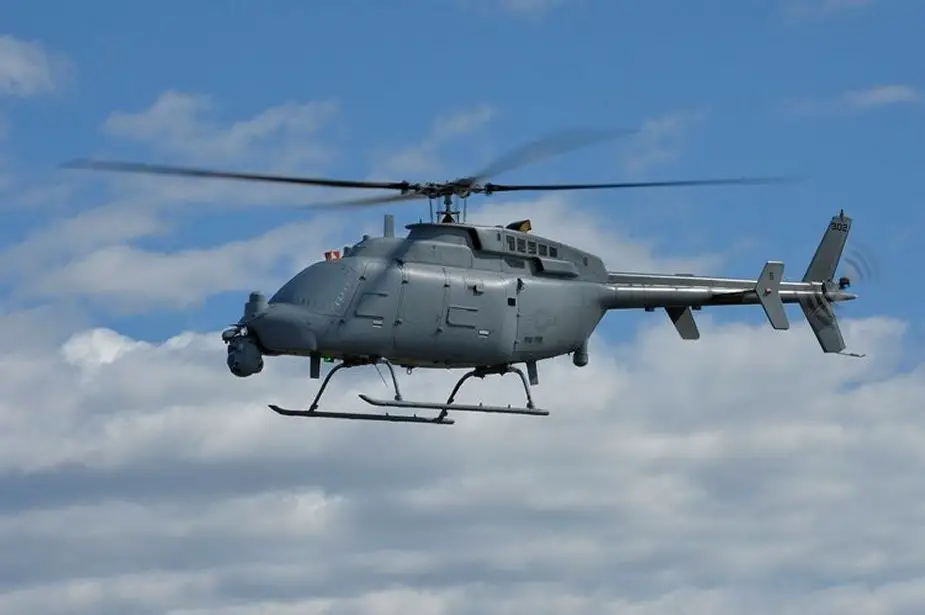Breaking news
U.S. Helicopter Sea Combat Sqn 22 gets first MQ-8C Fire Scout UAS.
Helicopter Sea Combat Squadron 22 received its first Northrop Grumman MQ-8C Fire Scout unmanned helicopter on Sept. 15 aboard Naval Station Norfolk, the squadron announced.
Follow Air Recognition on Google News at this link

Flight testing of the Leonardo AN/ZPY-8 radar on the Northrop Grumman MQ-8C Fire Scout UAS by US.S Navy (Picture source: Northrop Grumman)
HSC-22 marks the first East Coast squadron to operate the MH-60S Knighthawk, MQ-8B Fire Scout and MQ-8C Fire Scout. “Incorporating the MQ-8C will represent a significant improvement in our unmanned air vehicle mission capability,” said Cmdr. Matthew Wright, HSC-22’s commanding officer. “The ‘Charlie’ is bigger, faster, can carry more mission equipment, and remain airborne over twice as long as our already-proven MQ-8Bs.”
Helicopter Sea Combat Squadron 22 (HSC-22) is a United States Navy helicopter squadron based at NAS Chambers Field (KNGU) in Norfolk, Virginia. The "Sea Knights" were Established on September 29, 2006, and have multiple missions including vertical replenishment, search and rescue, air-sea rescue and anti-surface warfare. The Sea Knights fly the MH-60S helicopter, manufactured by Sikorsky. It is the first new helicopter squadron at Naval Station Norfolk in 22 years. HSC-22 is the sister squadron of HSC-23 "Wild Cards" stationed at Naval Air Station North Island in Coronado.
HSC-22’s mission is to provide manned and unmanned maritime attack and combat support capabilities to the fleet. HSC-22’s inherent versatility provides full-spectrum warfighting support across multiple mission sets and diverse and distributed platforms.
The Northrop Grumman MQ-8C Fire Scout (known as the Fire-X during development) is an unmanned helicopter developed by Northrop Grumman for use by the United States Navy. The MQ-8C also has autonomous take-off and landing capability. It is designed to provide reconnaissance, situational awareness, aerial fire support and precision targeting support for ground, air and sea forces. The MQ-8C airframe is based on the Bell 407, while the avionics and other systems are developed from those used on the MQ-8B Fire Scout. It first flew in October 2013 and achieved initial operational capability on 28 June 2019.
The MQ-8C was declared mission capable on 28 June 2019. In tandem with a change in focus for the LCS involving increasing the ship's lethality, the MQ-8C's role was changed to focus on providing targeting and surveillance data. While the helicopter could carry 7-tube APKWS guided rocket pods, the LCS only has one weapons magazine used to store all the ship's weapons and didn't provide much space for loading weapons onto the aircraft. Instead of being a weapons platform, the MQ-8C will use its long endurance and radar to provide the LCS with enhanced over-the-horizon targeting capabilities.



















